Yags’ Point Forward - Potpourri
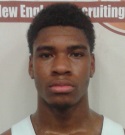
NO SUCH THING AS “UNDERSIZED” IN TODAY’S GAME
We hear about it at the NBA level all the time. A team goes to their “Small Ball” lineup in order to counter their opponent’s size advantage with speed and skill on the perimeter. It’s nothing new on the New England prep circuit, where prospects like Bonzie Colson (Notre Dame) and Georges Niang (Iowa State) have taken advantage of bigger defenders by dragging them out to the perimeter, opening up the lane, and giving their guards and wings more room to attack the basket. They’ve continued doing a comparable amount of damage at the highest levels of college hoops, all without sacrificing anything on the defensive end.
As teams at every level of basketball find success with lineups featuring players with skillsets similar to Colson and Niang, the small ball lineup has gone from an en vogue concept to the accepted norm.
Agile and athletic shot-blocking 7-footers, with a soft shooting touch, like Mohamed Bamba have been and always will be the game’s most valuable asset because of how rare they are. But today’s style has made players like Hamidou Diallo, Hasahn French, Jermaine Samuels, Kimani Lawrence, and Marcus Santos-Silva more valuable than ever.
French and Santos-Silva both measure out at 6’7” but their strength, length (6’11” and 7’ wingspans respectively) and ability to gain leverage by getting underneath the opposing big man, has made them two of the region’s most attractive rising prospects and has earned them offers from programs in the nation’s best basketball conferences. PSA coach Munch Williams consistently asked French to defend the opposing team’s big while Bamba ran loose on the wing and lingered along the baseline for weakside blocks.
Samuels and Lawrence have the necessary athleticism, size, and frames to possibly defend four positions on the court at the next level, giving them the ability to slide over and play alongside any lineup that happens to be on the floor, big or small. Both have seen their recruitment climb higher up the college basketball food chain, with Duke now routinely checking in on Samuels and coaches from Cal, USC, and Xavier keeping close tabs on Lawrence.
Meanwhile, Hamidou Diallo is slowly becoming the exception to every rule and the embodiment of what coaches at every level are looking for versatility-wise. Diallo no longer plays at the manic pace that we became accustomed to over the last two years, instead choosing his spots wisely and taking what the defense gives him, depending on the size of his defender.
His offensive versatility was never really in question, it just needed to be harnessed and sharpened. But on defense, Diallo is now just as comfortable switching onto a point guard as he is a bigger wing, using either his elite speed or 6’11” wingspan depending on what he needs in the given situation. It enabled Team USA’s 18U head coach, Shaka Smart, to play him alongside two point guards in smaller lineups that have given the rest of the squads from North and South America nightmares en route to a gold medal last week. He still needs to commit 100% of himself on both ends and realize that 28 minutes of max effort is better than 40 minutes of on-and-off play, but that is an aspect of the game that becomes understood with experience. Time is undoubtedly on Diallo’s side!
It really would have to be an extreme situation these days to label a prospect undersized, even when discussing the point guard position and especially in our area of the country. On the college level, New England has been home to the UConn tandem of Shabazz Napier and Ryan Boatright, who made it damn near impossible for Kentucky’s Harrison Twins to put the ball on the floor during the 2014 National Championship game. At the NBA level, the Celtics’ Isaiah Thomas has been raising his stock year after year by doing exactly what he did during his prep school days at South Kent, producing at a high level against bigger players with larger reputations.
While those players were viewed as the exceptions in the past, their success has paved the way and opened the door for similarly-sized and equally productive prospects to burst onto the radar of high major coaches across the country.
The bottom line is that college coaches are beginning to value and specifically recruit the type of players that their brethren at the NBA level have found success with recently.
By paying attention to certain measureables (wingspan and weight distribution) when it comes to post players and understanding that specific statistics translate really well from level to level (blocked shots, assists, rebounds, and 3pt%) even if a player lacks elite physical attributes, some college coaches are taking advantage of overlooked skills by consistently signing underrated prospects.
BEDE A BEAST AND THE STOCK-RISER OF THE SUMMER
The rumblings really started early last winter, long before Cushing Academy guard Wabissa Bede led his Mass Rivals squad to back-to-back titles at the Adidas Gauntlet Finale and the Adidas Summer Championships.
Opposing coaches and scouts would walk away from a Cushing game with the same sentiments: “Yeah, Ashton-Langford is definitely as good as advertised but that Bede kid….man, he is so TOUGH! Who’s offered him so far?”
The first sentence was always said with a headshaking smile while the latter was a comment made out of complete confusion that they hadn’t heard the name Wabissa Bede prior to the given performance.
Regardless of the number of stars next to a player’s name or whatever reputation precedes a certain prospect, being labeled as “tough” is an abbreviated way of saying, “That young man can play on my team any day of the week.” But tough only begins to describe Bede as a player and a teammate.
July is a loaded month for any group of players on the “AAU” hoops circuit. The fact that Rivals went an astounding 21-0 was well documented during their nationally televised finale against Garner Road. When you take a step back and realize that you were watching that broadcast on July 24 and it almost makes your head start to spin. You never would’ve realized it by watching Bede though.
Bede’s endless energy, gregarious nature, and natural vibrancy are contagious while his unselfish style of play is perfect for a Rivals team that goes 12-deep with D-1 talent. Now that the overwhelming majority of his baby fat has been turned into toned muscle, his body has improved to the point that it’s one of his true strengths. Bede’s shiftiness in tight spaces is a product of his strength and his ability to change direction and pull up on a dime drives opponents insane.
The one thing that every college coach will be happy to hear is that there’s nothing fake about Bede’s personality or his energy. Not only is it all genuine but it’s also unrehearsed because the young man has a feel for the moment and is so comfortable in his own skin. The one thing Bede is never mistaken is as soft.
Whether he’s using his strong frame to his advantage in the lane or his killer step-back on the perimeter, the one place coaches at both the prep and college level won’t enjoy running into Wabissa Bede is on the court. That same gap-toothed smile that can light up a room can just as quickly be found at crunch time when it’s time to tear out an opponent’s heart. More coaches are realizing that after the clinic Bede put on throughout the month of July and are putting themselves in positon to be on the correct side when he flashes it!
Butler offered the 6’1” lead guard prior to his sizzling summer but Bede now also counts VCU, UMass, LaSalle, Dayton, Nebraska, Virginia Tech, Oklahoma, Minnesota, Missouri, and Texas A&M among his list of suitors.
PRODUCTION IN THE NEPSAC = PROSPECT CREDIBILITY
It’s easy for those outside of New England to catch our region’s top prospects for the first time on the summer circuit and point to a particular event on the summer calendar as a player’s breakout performance or when they truly made a name for themselves on the national level. The truth is, once players start producing on a consistent basis against upper-level NEPSAC competition as underclassmen, it’s usually only a matter of time before their reputation as a prospect is recognized and rewarded with D-1 scholarship offers. And unlike other prep conferences across the country, the level of production usually coincides with the level of program they attract.
In order to produce regularly at the NEPSAC AAA- and AA-level, a player has to own an above average skill of some sort. And much like when a younger prospect goes higher in the NBA Draft than a 4-year college senior, college coaches take both the level and age of a player’s competition into consideration when comparing them against the field. In the NEPSAC, an underclassman is consistently playing against older and extremely high-level competition. Very rarely does a player become overwhelmed at the college level after multiple years of NEPSAC production under his belt.
Put it all together and it’s understandable why the NEPSAC is producing prospects that are capable of playing and contributing right away at the highest level of major college basketball. The Class of 2017 may be one of the deepest in a long time and the best example of what kind of talent the NEPSAC is capable of churning out on an annual basis.
After Northfield-Mt Hermon 6’4” wing Andrew Platek committed to North Carolina earlier this month and players such as French, Bede, and Santos-Silva cemented their status as high major prospects, the Class of 2017 is on pace to feature some of the most impressive depth from both a prospect and program perspective to come out of New England in recent years.
Without taking a single Brewster Academy or St. Thomas More prospect into consideration right now, New England is already prepared to send upward of twenty 2017 prospects to high major programs. By the time rosters are filled out at the end of the summer, we could be looking at a collection of talent that can favorably compare to any one that has come before it.
The final month of the summer is guaranteed to shine a light on a few more New England prospects heading into the school year. Keep names like Geo Baker, Bailey Patella and Walter Whyte at the front of your mind this August. Their trajectory and selfless play throughout the summer could lead to them making much bigger impressions once individual camps take the place of team tournaments.
It’s going to make for an extremely interesting ’16-’17 season, that’s for sure. But I also don’t want to look too far ahead, especially when you consider the New England weather that comes along with the prep season!


 Hasahn French
Hasahn French
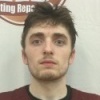 Andrew Platek
Andrew Platek
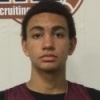 Geo Baker
Geo Baker
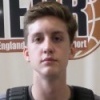 Bailey Patella
Bailey Patella
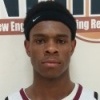 Walter Whyte
Walter Whyte
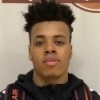 Wabissa Bede
Wabissa Bede
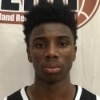 Hamidou Diallo
Hamidou Diallo
 Kimani Lawrence
Kimani Lawrence
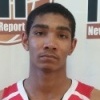 Jermaine Samuels
Jermaine Samuels